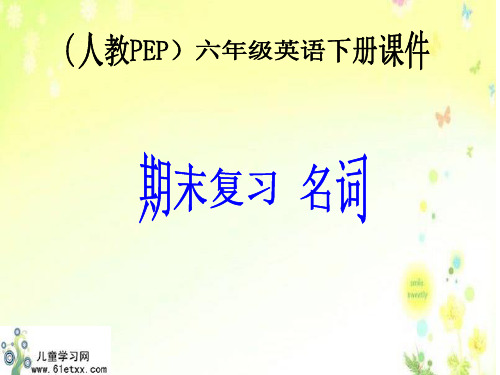
Are you eating lunch? No, we aren’t.
Are they eating the honey? Yes, they are.
Is he playing chess? Yes, he is.
23. Is she counting insects? No, she isn’t. 24. Who’s your English teacher? Mr Carter. 25. What’s he like? He’s tall and strong. 26. Is she quiet? No, she isn’t. She’s very active. 27. Is she strict? Yes, she is, but she’s very kind. 28. What day is it today? It’s Wednesday.
9. He likes collecting stamps, too. 10. Does she teach English? Yes, she does. No, she doesn’t. 11. What does your mother do? She is a TV reporter. 12. Where does she work? 13. How does she go to work? 14. Where does the rain come from? It comes from the clouds. 15. How do you do that? 16. What should you do then?
PEP小学英语主要句型
(人教PEP)六年级科学下册课件
1. How do you go to school, Sarah? Usually I go to school on foot. Sometimes I go to school by bike. 2. How can I get to Zhongshan Park? You can go by the No.15bus. 3. Where is the cinema, please? It’s next to the hospital. 4. Turn left at the cinema, then go straight. It’s on the left.





